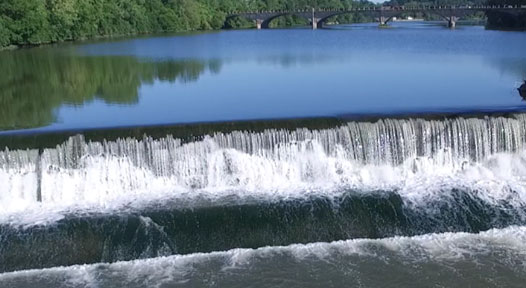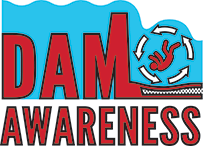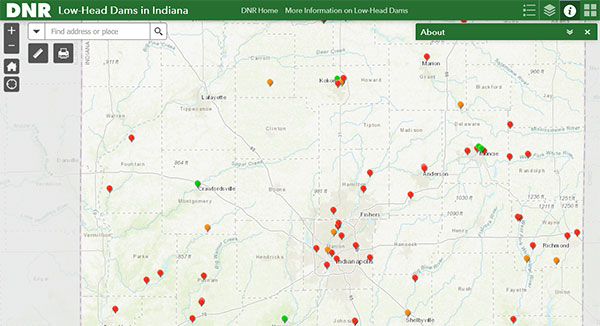
What is a low-head dam?
A low-head dam is a man-made obstruction typically built within a river or stream channel, and spanning from bank to bank.
Many variations exist among the thousands of low-head dams on streams and rivers throughout the United States, but they generally:
- have water flowing across the entire length of the top of the dam,
- are from 1 to about 15 feet tall (although taller ones exist on very large streams),
- store a minimal amount of water below the stream bank level, within the channel, and
- do not typically provide flood reduction storage.
Why are they dangerous?

Low-head dams can be deceivingly dangerous. At times the water around them appears tranquil and inviting; however, moderate to high flows over such dams create strong turbulence and recirculating currents that can push victims underwater, and then pull them back to the face of the dam in a repeating cycle.
These structures have been known to trap unsuspecting victims in dangerous conditions. Even the strongest swimmers and rescuers wearing the best personal floatation devices have drown at low-head dams.
Safety tips
Know hazard locations
- Familiarize yourself with the stream. Know hazards along your route and plan to portage around them.
- Low-head dams can be difficult to locate and are usually not marked.
- When looking downstream, a smooth horizon line where the sky and stream meet or concrete/stone retaining walls may indicate a low-head dam.
Avoid low-head dams
- Never attempt to paddle over a low-head dam. Don’t get too close.
- Portage around the dam or paddle back to your put-in spot.
- When portaging, go far enough upstream from the dam so you can safely make it to shore before being swept over.
- To re-enter, go far enough downstream that you do not get swept back into the current of the dam.
What to do if trapped
- Tuck your chin into your chest, draw your knees up and wrap your arms around them. Conditions may push you out of and away from the hydraulic current, along the streambed.
- If a fellow paddler becomes trapped do NOT jump in after them. Do NOT approach the hydraulic from a boat in attempt to rescue.
- Get to the shore and call for help. About 25% of all low-head dam deaths result from attempts to rescue another person.

